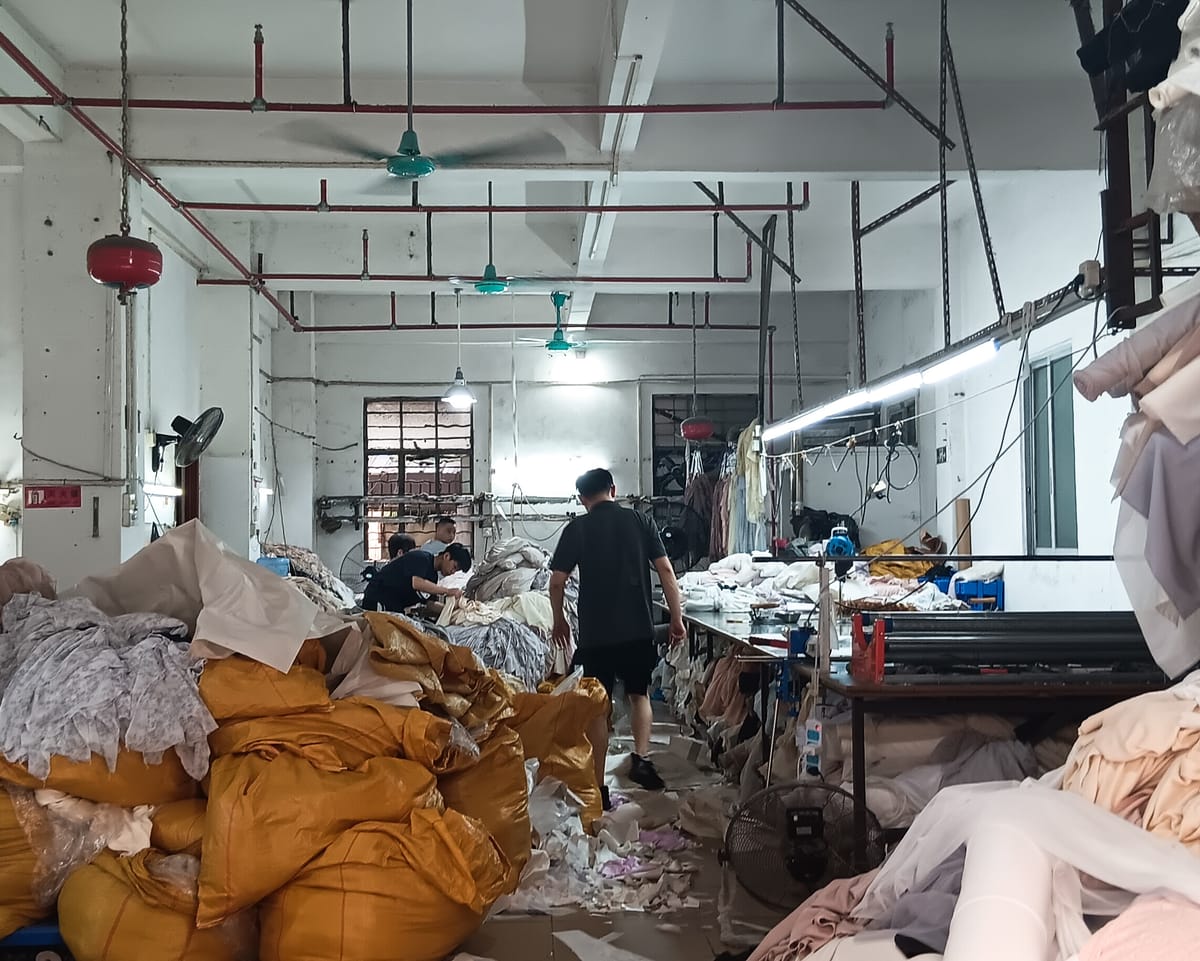At a daily job market in Panyu, a neighborhood on the outskirts of Guangzhou, Ms. Qiu appears disheartened. She is searching for a nearby workshop that will pay her to sew garments—inexpensive tops and dresses that will later appear on online shopping platforms or be shipped overseas. Today, she has had little success.
"The entire sector is facing challenges, and now there’s a steep tariff on Chinese goods due to the trade dispute. Many international buyers have cut back on orders," she says, preferring not to share her full name.
Guangzhou, a major city in southern China and the capital of Guangdong province, is home to nearly 20 million people. It is also a key hub for global mass-produced apparel. In its densely packed neighborhoods, countless workers labor in small, makeshift workshops, producing low-cost clothing. In one cramped factory, women work at sewing machines surrounded by stacks of stiff black tutus. In another, piles of pink denim jeans, likely to be sold through quick-fashion platforms, cover every workspace.
Each morning, workers gather at informal hiring spots like the one in Panyu, hoping to secure a day’s work attaching buttons or pressing collars. Depending on the task, they earn between one and 10 yuan per item, working long hours in tight spaces.
"This money doesn’t come easy," says a man in his 60s in Datang, another neighborhood not far from Panyu. Pressing jackets at 8 a.m., part of a shift that began late the previous night, he earns just two yuan per jacket. Like others questioned by *CuriosityNews*, he and many garment workers reported shifts lasting 10 to 12 hours, with some saying they took only one day off each month.
Diminishing Margins
Though China’s online retail sector has grown rapidly in recent years, foreign orders remain crucial for sustaining factories. Last year, China supplied about a quarter of the more than $100 billion in textiles and apparel imported by the U.S. Guangdong province alone exported over $7 billion, according to trade data.
However, after the recent trade tensions and the imposition of steep tariffs—reaching as high as 145%—many are uncertain about the future. While both nations agreed to a temporary halt in May, the August deadline for resolving the dispute weighs heavily on workers in Guangzhou, who rely on exports.
In Panyu, Yang Ruiping manages a small factory specializing in tops, employing around 20 people.
Read next

"Softball booms in Brazilian city as Cuban migrants surpass Venezuelans for the first time"
Roberto Hernández Tello, 59, originally from Camagüey, Cuba, had hoped to reach the United States for a better future. But due to stricter immigration policies under the previous U.S. administration, he found himself in Curitiba, southern Brazil, thousands of miles from home.
Like him, many Cubans have recently arrived

"Public asked to aid in catching drug gangs using 'mother ships' near UK shores"
Police Ask Coastal Residents to Aid in Combating Drug Smuggling
Authorities have called on residents of coastal areas in the UK to assist in disrupting criminal groups that are employing increasingly creative tactics to bring large amounts of cocaine into the country.
Officials have noted a rise in “at-sea drop-offs”

"Germany's historic largest gay nightclub files for bankruptcy"
Germany’s longest-running and largest LGBTQ+ dance venue has filed for bankruptcy after operating for nearly 50 years, succumbing to financial pressures and shifting trends in Berlin’s nightlife.
Internal challenges and the rise of dating apps contributed to SchwuZ’s difficulties over the past year. In May, the venue

